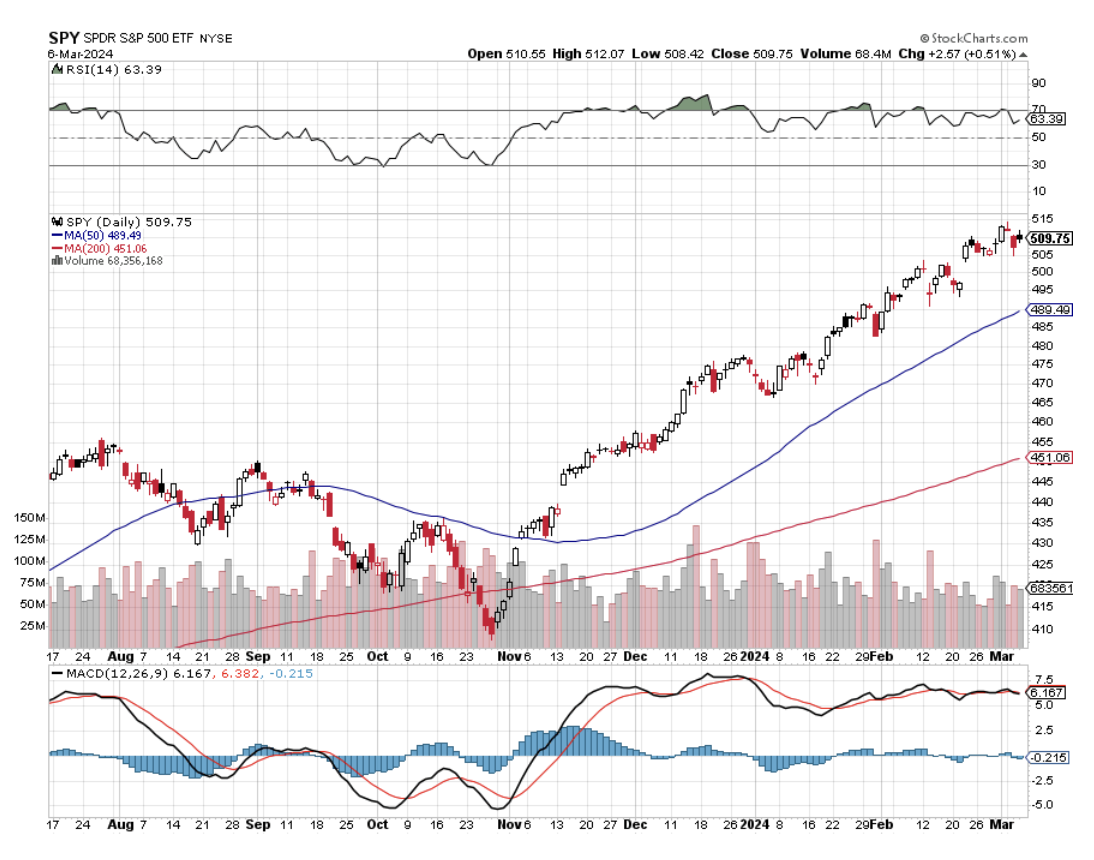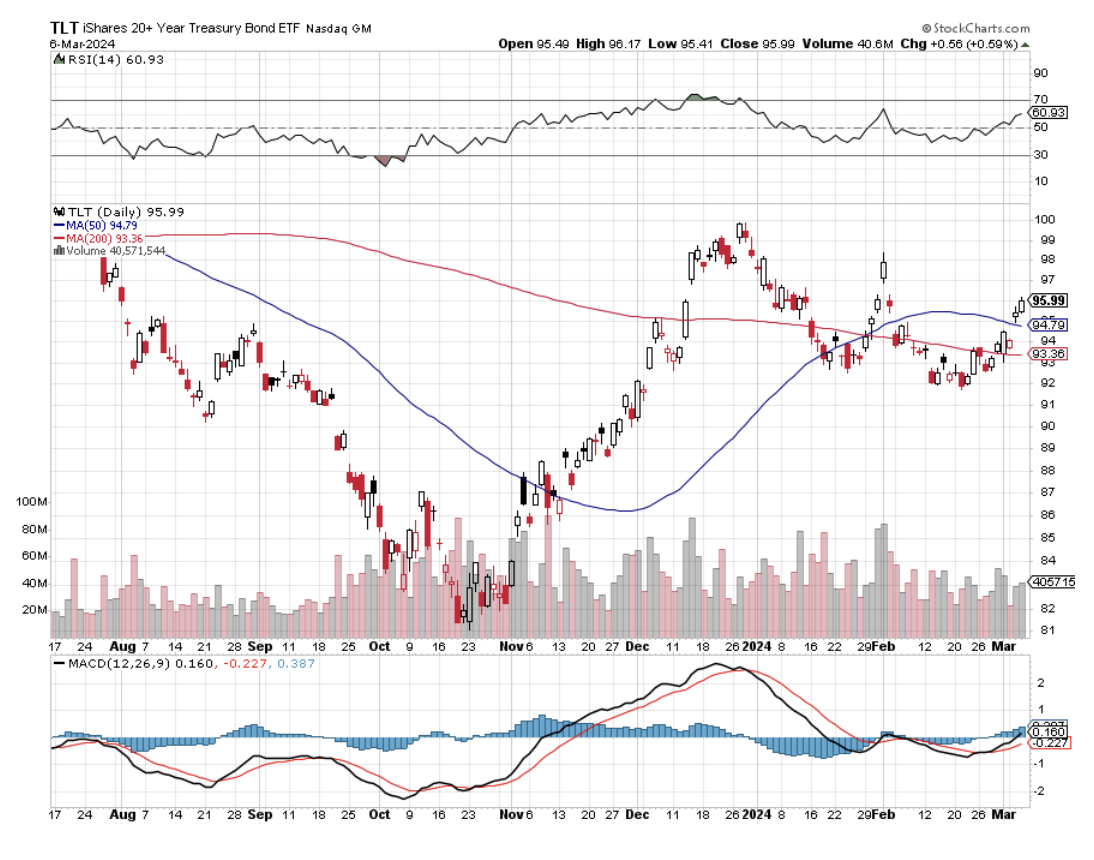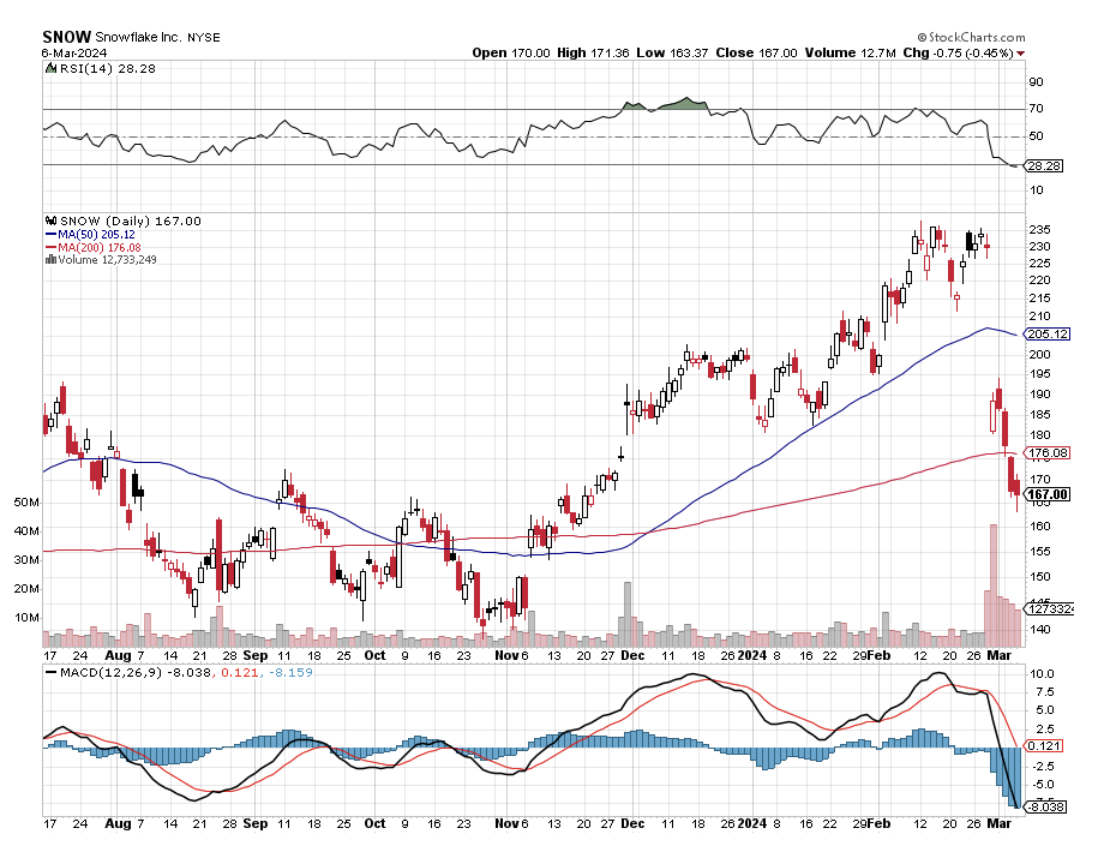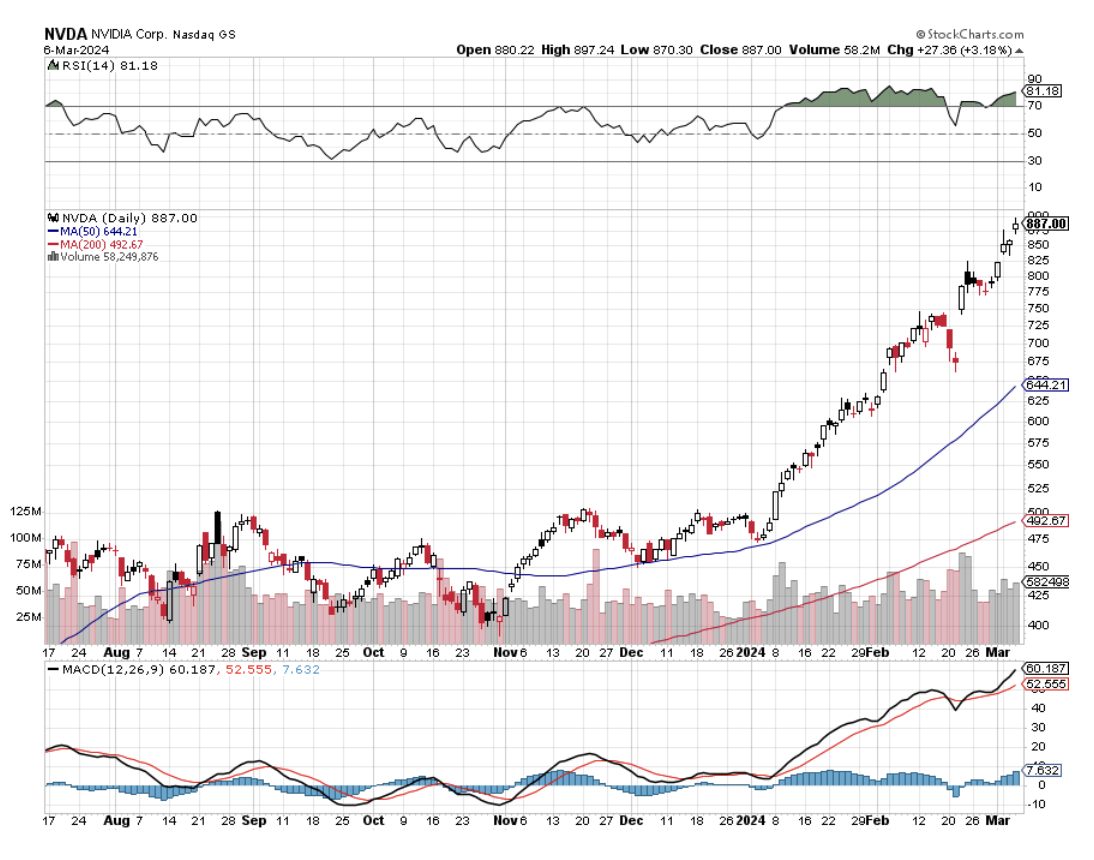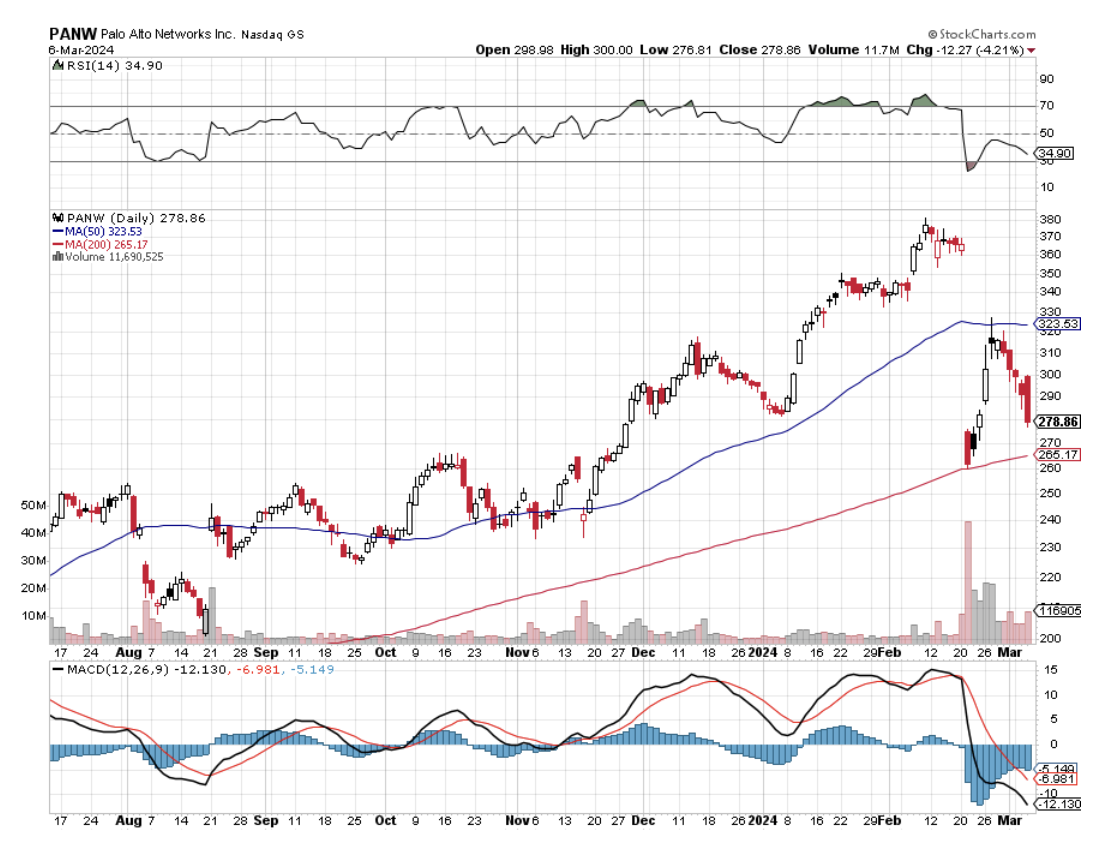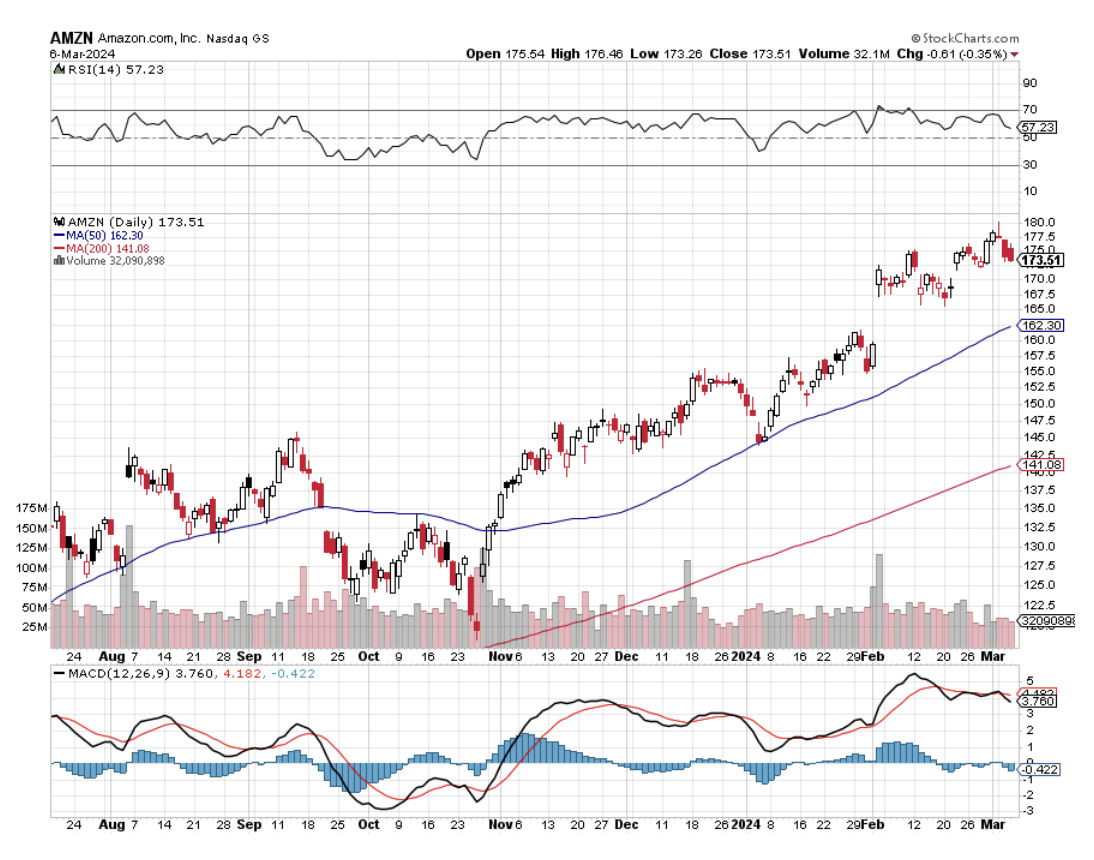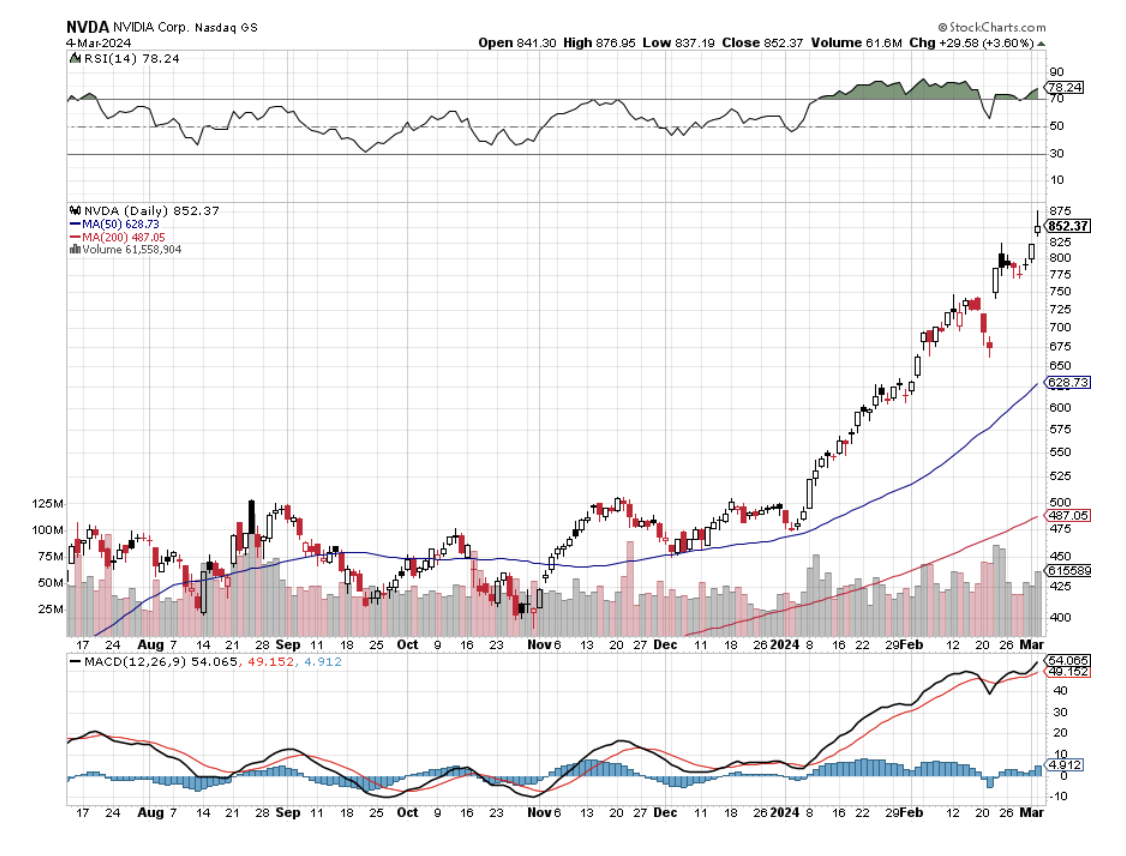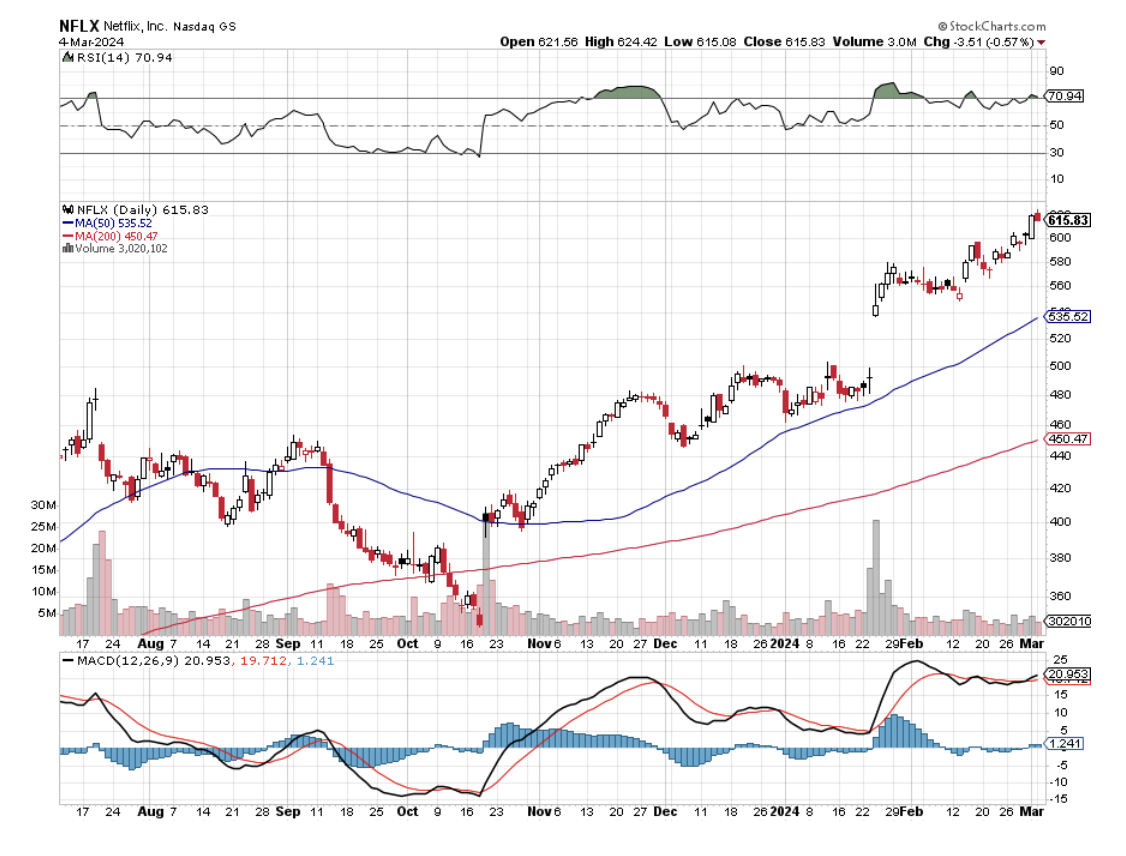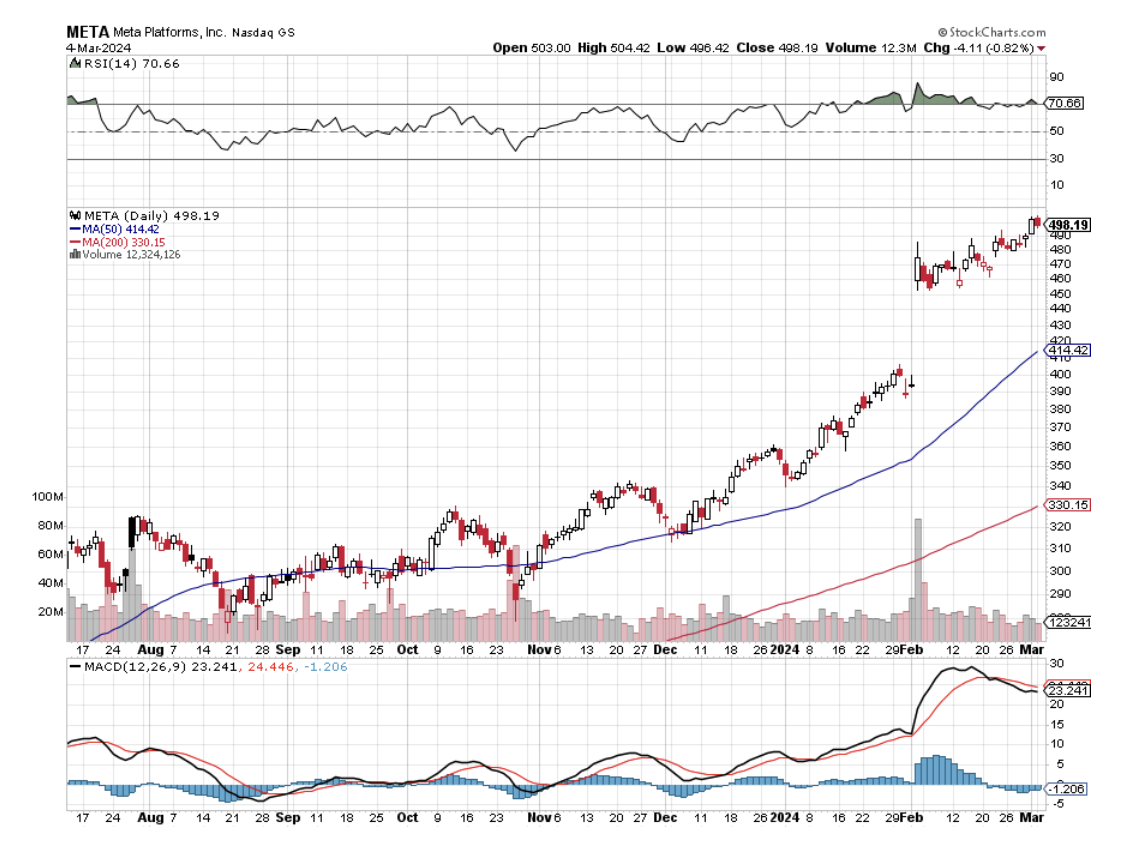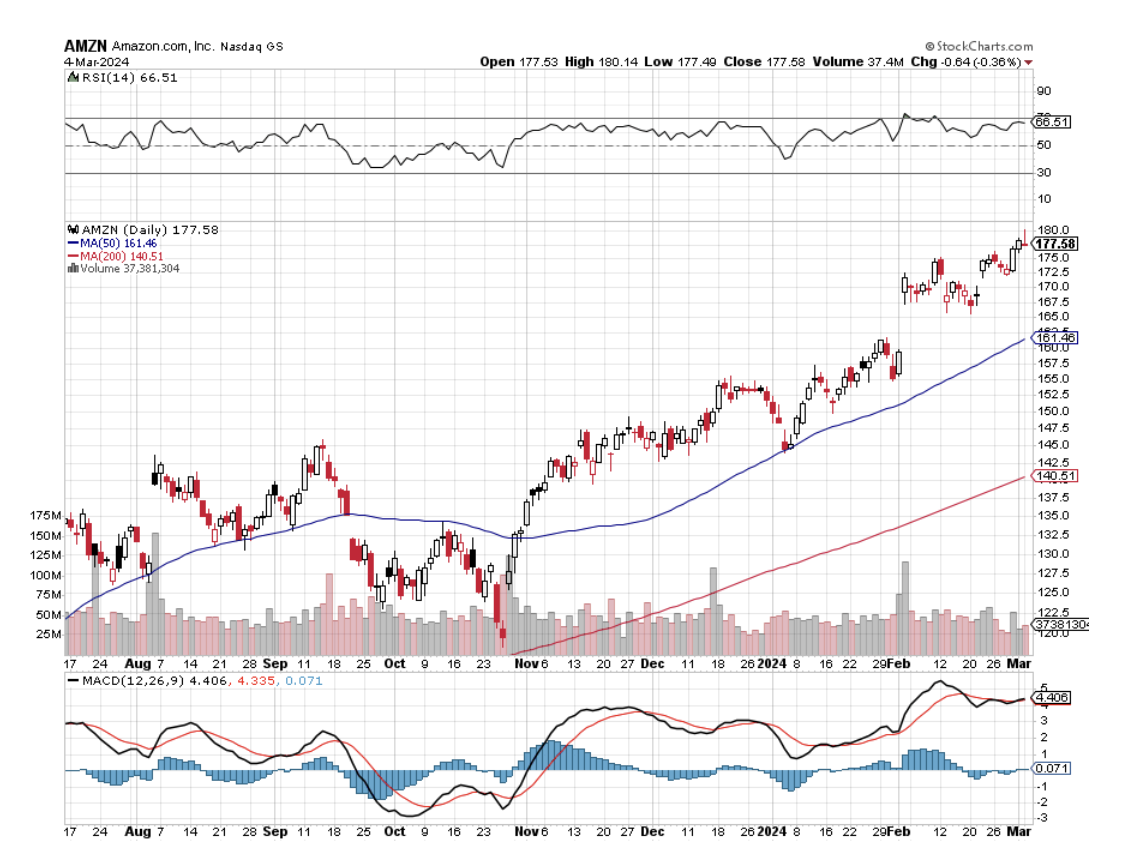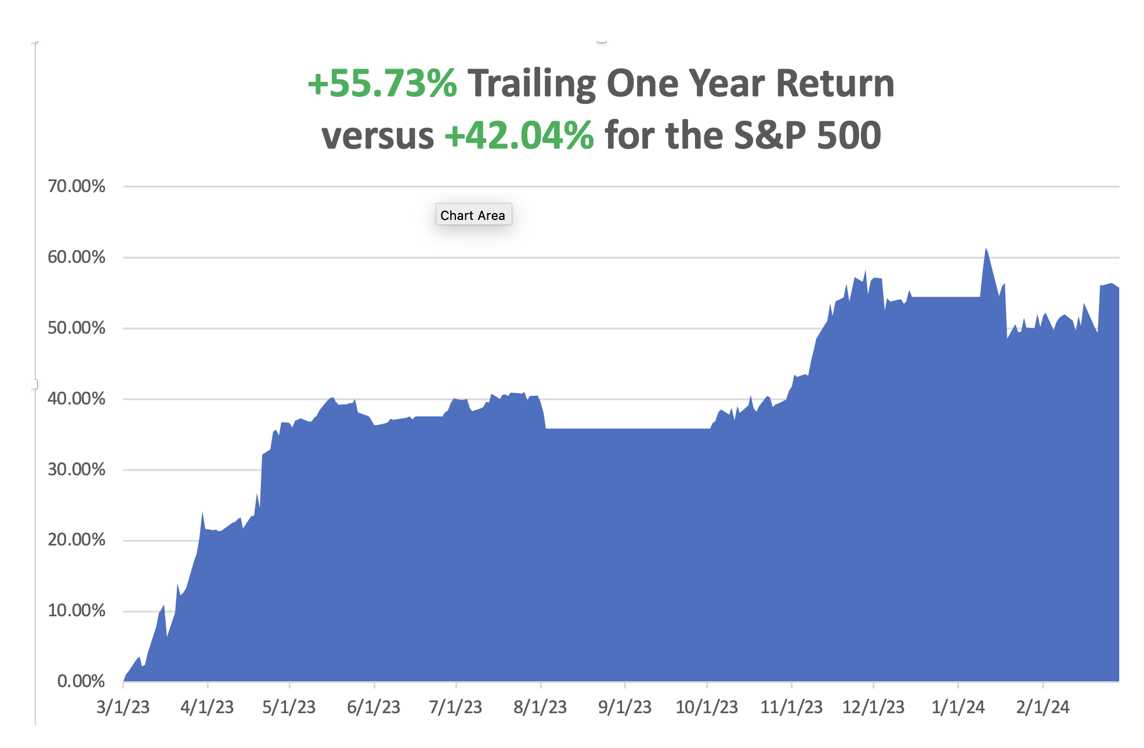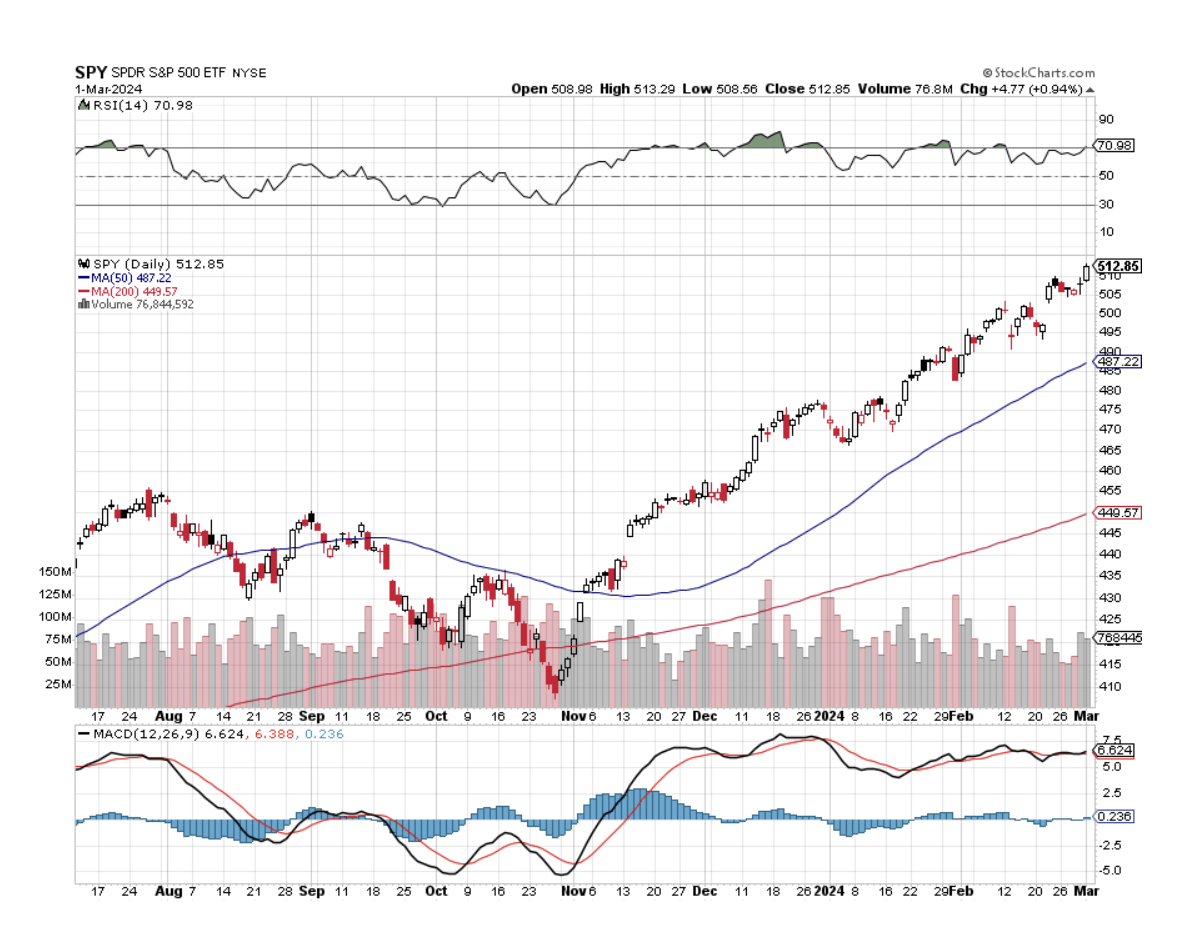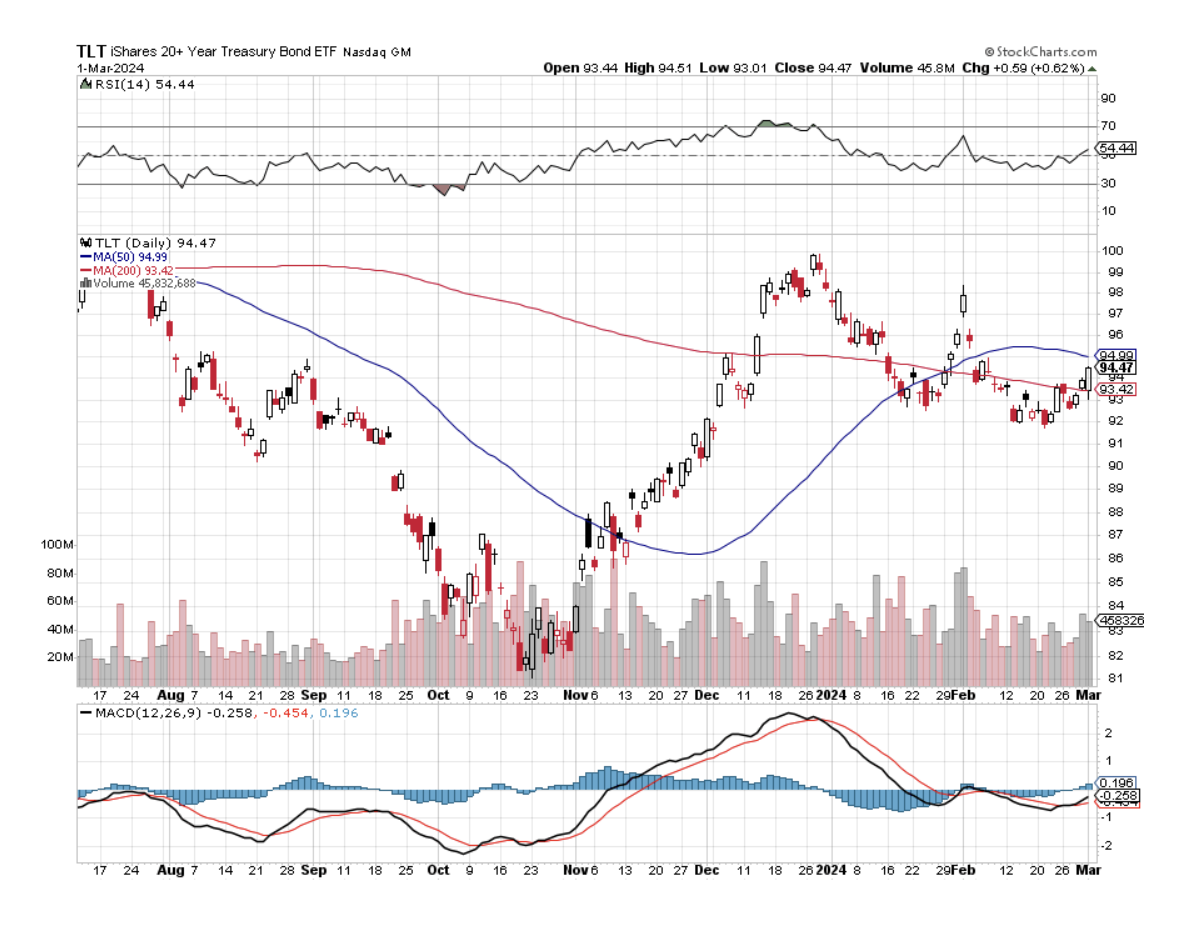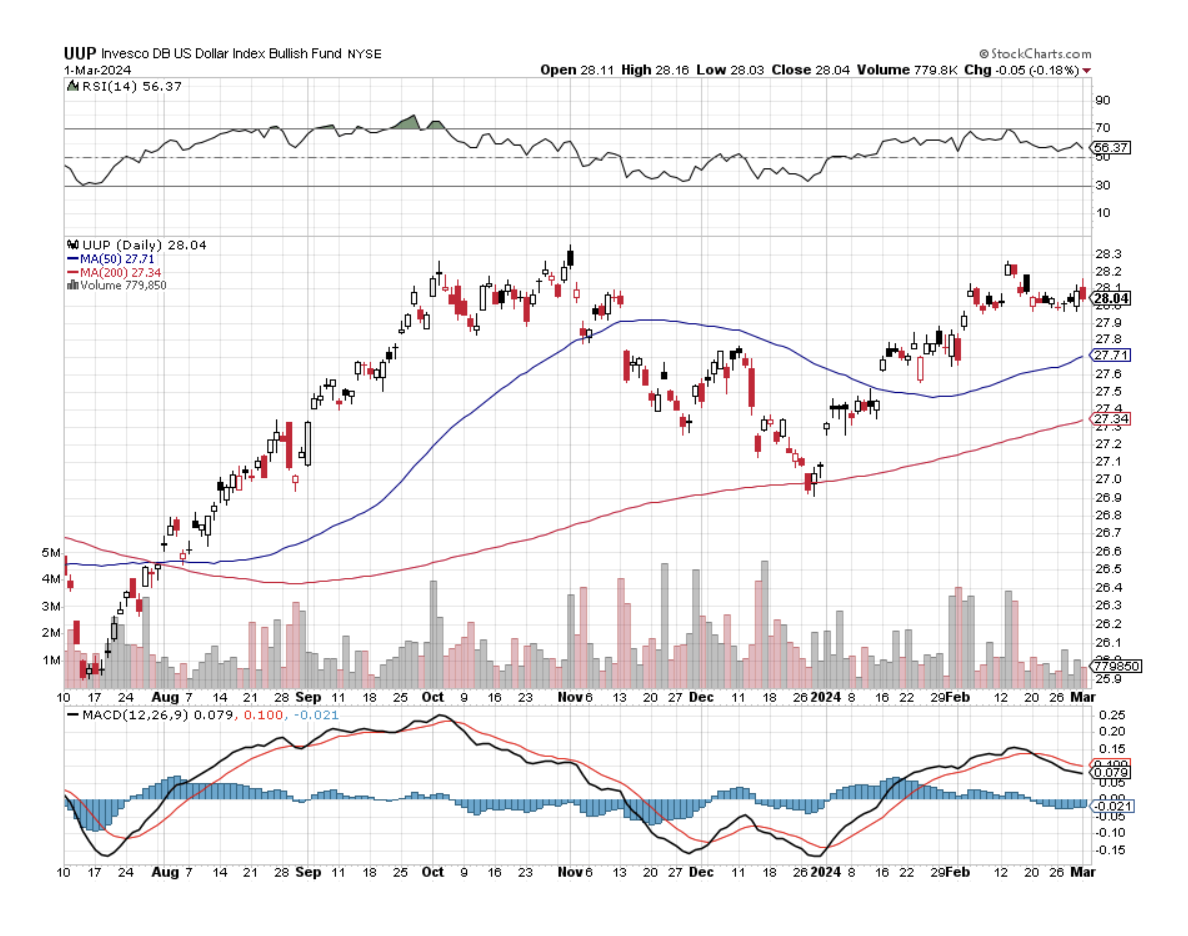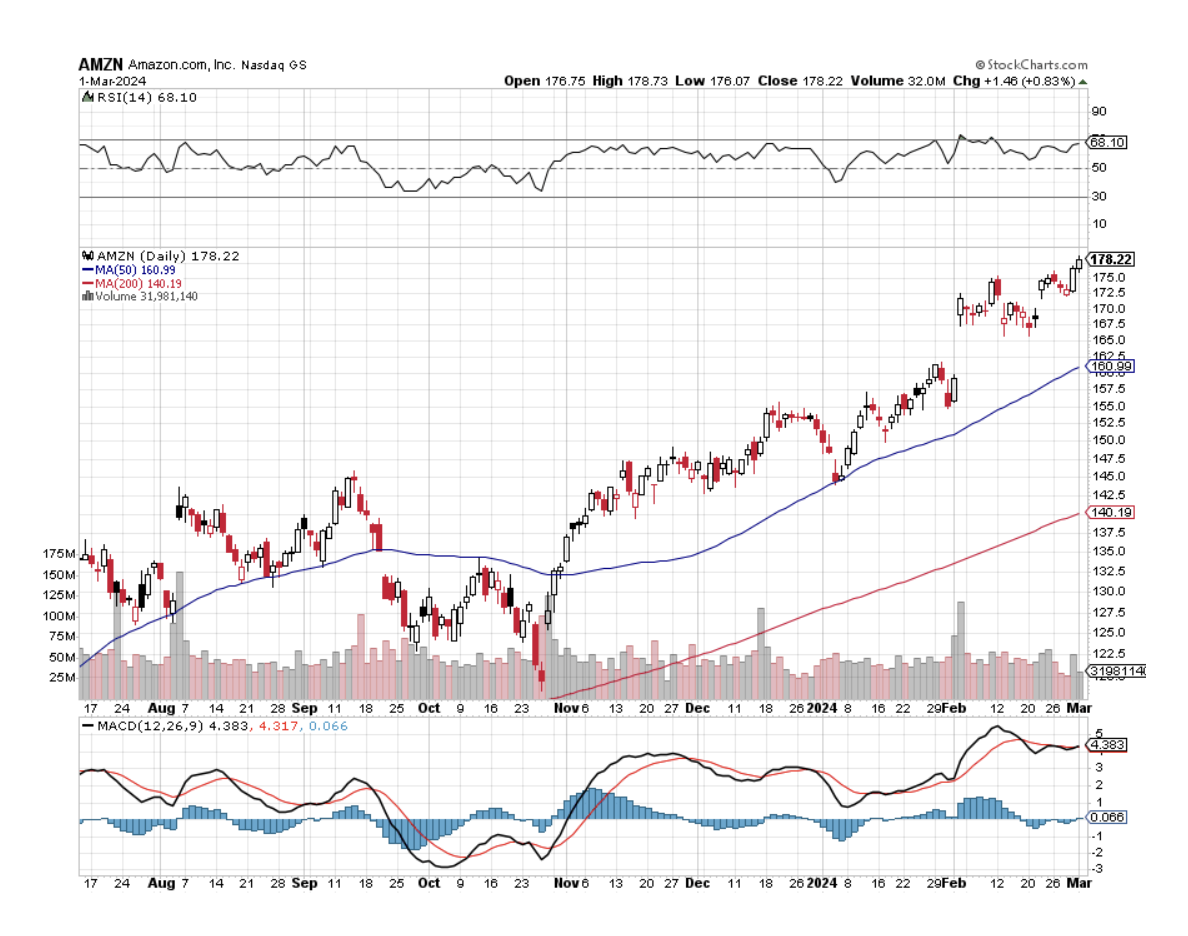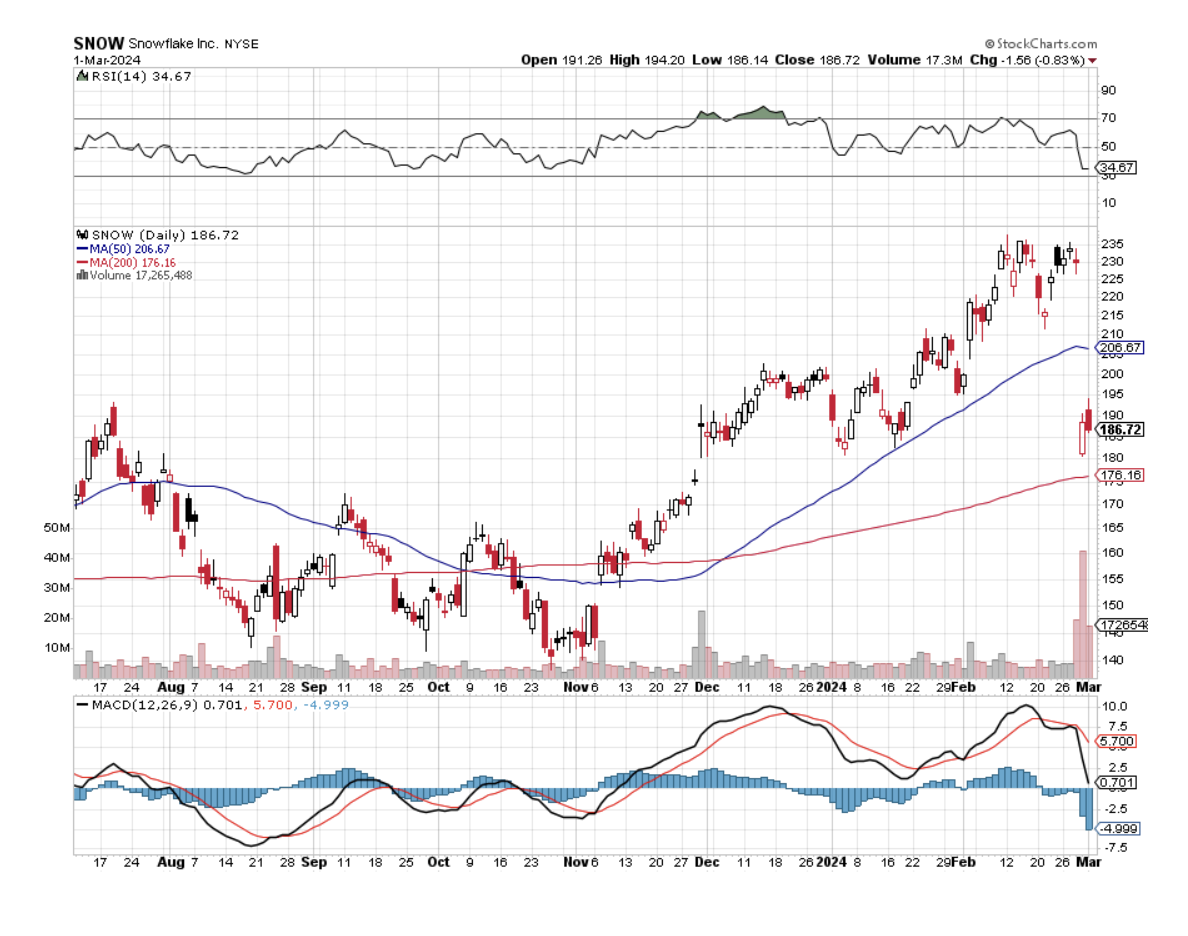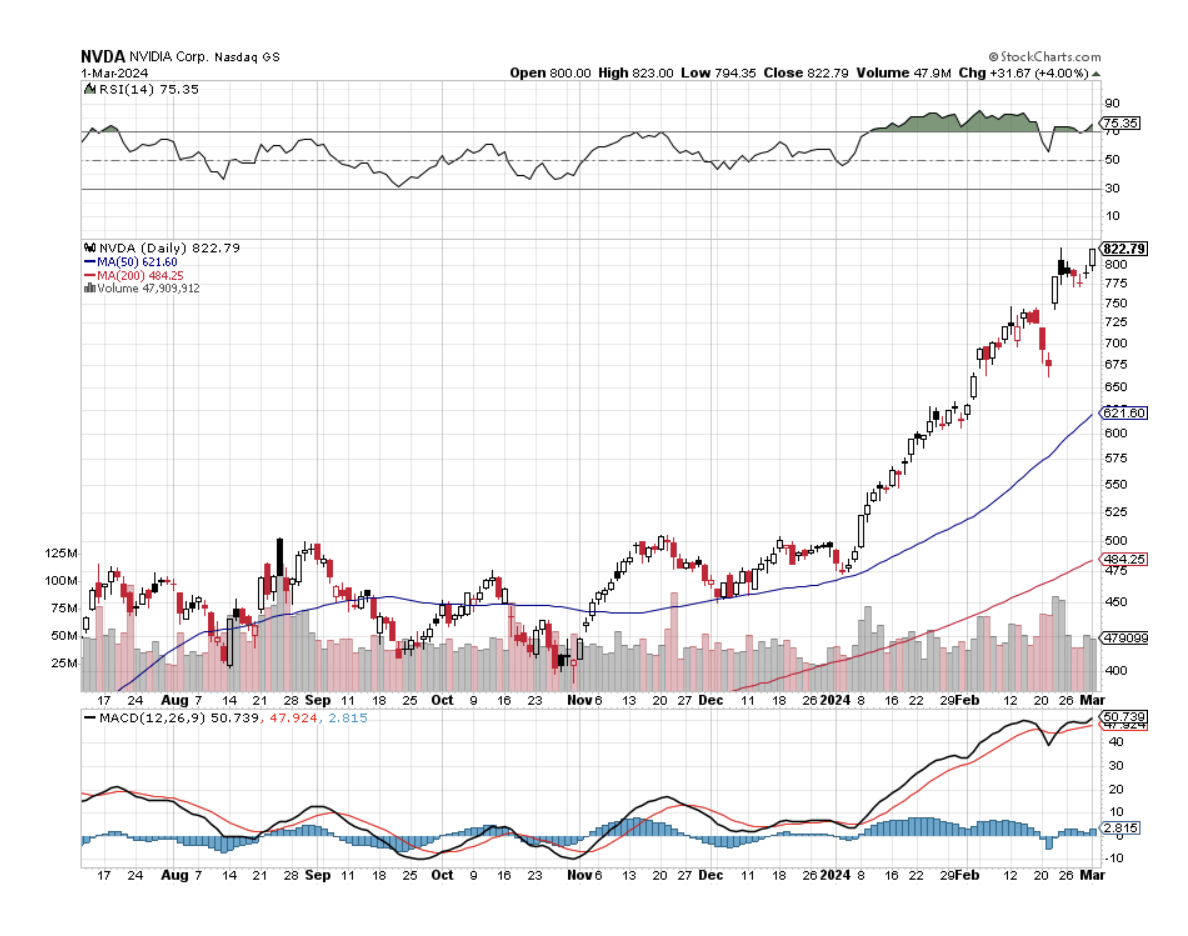Below please find subscribers’ Q&A for the March 6 Mad Hedge Fund Trader Global Strategy Webinar, broadcast from Silicon Valley, CA.
Q: With your projections of the Dow going to $240,000 in 10 years, would it be wise to invest in the Dow?
A: The Dow is just an indicator that everybody understands and is familiar with what the media uses. What I tell people to do is if you are not an aggressive person, put half your money in the S&P 500 (SPX), which is getting most of the gains, and half in the technology (QQQ), which is getting all of the gains. If you're an aggressive person, say in your twenties, thirties, or forties, then you put all of your money in the Invesco QQQ NASDAQ Trust (QQQ) because you'll live long enough to survive the inevitable downturns.
Q: What should we do now with Palo Alto Networks (PANW)?
A: Keep it. It’s a fantastic long-term company. This is a rare opportunity to get in on the long side, as this is a company that I think could double over the next 3 to 5 years. Hacking is never going out of style and now they have AI. The selloff was caused by a major platform upgrade which may cause profits to dip for a quarter. That’s now in the price.
Q: With the successful launch of Bitcoin, should we allocate 5% or 10% of our portfolio to Bitcoin?
A: Only if you can handle a 90% decline at any time without warning because that's exactly what it did in 2021. Calling it a store of value is a fantasy. You also still have big theft issues with Bitcoin. You don't have theft issues if you have all your money at Morgan Stanley, Goldman Sachs, Merrill Lynch, and so on, so there is a security issue (with Bitcoin). The only way to bypass the security issues is to have a hot wallet, and the only way to have a hot wallet is to be a computer programmer yourself or have a degree in computer science—so it's not for most people. If you can navigate all of that, then maybe; but again, nobody knows when the next 90% decline is going to come. By the way, if I can find stocks with Mad Hedge Fund Trader that go up faster than Bitcoin, I'd much rather own the stocks, because at least I know what they make.
Q: Is Snowflake (SNOW) a buy here at $155?
A: Absolutely. Another great cybersecurity database company. But if we drop to $155, we're going to stop out of the front month call spread and try to buy it back lower down.
Q: Do you think it's wise to sell the semiconductor stocks now and buy them back lower down, and pay the taxes?
A: Probably not. They are really the most volatile sector in the market. If you sell now, it's unlikely you'll be able to pick up the next bottom and get back in, and you have to pay the taxes. So it's probably better just to keep a core long-term position in the semis, especially Nvidia (NVDA); and if it drops 200 points, just buy more. That's what I'm doing. I'm keeping all of my Nvidia LEAPS. All my call spreads and short put positions are about to expire at max profit, and I even have a little bit of stock that I'm keeping. So I think Nvidia goes to $1,000 at one point and now, the forecast of $1,400 is out there. So as Nvidia goes, so goes the entire rest of the semiconductor industry.
Q: You're only 30% invested. Are you looking for a pullback, or are you just waiting for new opportunities to appear?
A: Yes and Yes. I'm waiting for a fantastic company to come up with conservative guidance, which these days means an immediate 20 to 25% sell-off. That is your entry point for these good companies. That's how we got into Palo Alto Networks (PANW), and that's how we got into Snowflake (SNOW). In an extremely overbought market, those are your only opportunities until the market generally sells off or until the domestic plays finally start to take off, and we got the first hints of that last week.
Q: What is your view on junior gold mining stocks?
A: They are a buy here, absolutely, but you get enough volatility in the majors that you don't need to bother with the minors—that's always been my view. Because minors go out of business, they close mines, they don't find gold. A lot of minors have stocks go up on the possibility of gold being found, whereas the majors like Barrick Gold (GOLD) and Newmont Mining (NEM) actually have the gold, and it's just an industrial process of mining it. You know the minors, the juniors, are extremely speculative and high-risk, and that's why most of them are listed in Canada. They can't get a US listing. So that's enough of a tell for me to stay away.
Q: I just realized I have the wrong expiration date on my Amazon (AMZN) spread. Should I exit immediately?
A: What I would do is exit what you have and then wait for another down day on Amazon, and then put it back on. That's the way to deal with that one. The answer to all mistakes is to exit immediately. That's an automatic rule at Morgan Stanley; if you don't do that, you get fired. Or come up with a new set of logic as to why you own this position, which has been done by more than a few traders, I imagine.
Q: Would you be willing to be a Boeing 737 Max passenger right now or ever?
A: Yes! If you don't fly Boeings (BA), your life is suddenly very narrow and limited because you’re stuck on the ground. Boeing is the biggest-selling airplane in the world, and most fleets are made of Boeings. However, I'm a pilot, so if anything goes wrong I can run up front and take control, or at least tell the pilot what to do. I also have 25 parachute jumps, if they're handing those out in first class. So remember, every airplane without engines is a glider and I can land a glider anywhere. The company has major problems to sort out until it becomes a “BUY”.
Q: I cannot get into the (TLT) trade to save my life. Is the (TLT) April $89-$92 vertical bull call debit spread pushing the risk limits?
A: Yes. I would walk away from the trade and wait for a better entry point rather than chase. The whole fixed-income space has flipped from the bid side to the offered side, meaning we've gone from net sellers to net buyers. All asset classes have done that; you're seeing that in gold, silver, and even uranium. All the REITs are having a fantastic week. All interest rate plays are now being bid, and it's hard to buy stuff when things are being bid.
Q: What's it like being 6’4” and living in Japan?
A: Well, I did knock myself out a couple of times, banging myself on the door. You get used to bowing a lot, but bowing is a part of the culture in Japan. If you're watching the new Hulu miniseries, Shogun, you would know that. Once I was working for Sony and I was late for work, so I was running up the stairs, and they had a steel lintel to their door, and I just ran bang into that and knocked myself out. The Sony people thought, “Oh my gosh, we just killed a foreigner!” So yes, it was hard. The only clothes I could buy in Japan for ten years were belts and ties. I had to fly to Hong Kong and had everything else custom-made in those days.
Q: What's your opinion of Masters of the Air?
A: I absolutely love it. It's heartbreaking to watch. I knew a lot of guys who were there, and I was one of the last people trained on how to fly a Boeing B-17 Flying Fortress. Anybody who watched Masters of the Air with me gets to watch it with someone who is one of the last living people who rated on a B-17 as a pilot.
Q: Are we in a liquidity bubble right now?
A: Yes, we are, and boy, I love every minute of it. But we're not in the year 2000 in a liquidity bubble, we're in 1995 just getting started. And the profits from AI are just getting started which is what's creating this endless liquidity that people are seeing now.
Q: What should I buy the dip in Tesla (TSLA)?
A: There's no downside target for Tesla right now. We just have to wait for the meltdown in demand to finish, and who knows where that is. But with BYD entering the market, Tesla is definitely going to get more competition in emerging markets—that's where BYD is selling the cars now. I also understand they're selling them in Australia.
Q: How much longer can tech stocks keep rising?
A: 5 to 10 more years, but we are way overdue for some kind of pullback.
Q: What are your thoughts on Apple's (APPL) weakness?
A: Apple has become that great backward-looking company. It could drop to $160 or even $140, then we’ll be taking a serious look at some call spreads and LEAPS. You just wait. In four months when they announce their next batch of new products suddenly, they’ll become an AI company and recover the $200 level in no time.
Q: Should I dive into Coinbase (COIN)?
A: Absolutely not on pain of death! It's made its move. You're better off buying Nvidia (NVDA) at that kind of inclination because at least you know what they make.
To watch a replay of this webinar with all the charts, bells, whistles, and classic rock music, just log in to www.madhedgefundtrader.com, go to MY ACCOUNT, select your subscription (GLOBAL TRADING DISPATCH, TECHNOLOGY LETTER, or Jacquie's Post), then WEBINARS, and all the webinars from the last 12 years are there in all their glory.
Good Luck and Stay Healthy,
John Thomas
CEO & Publisher
The Diary of a Mad Hedge Fund Trader
Thank You NVIDIA!



